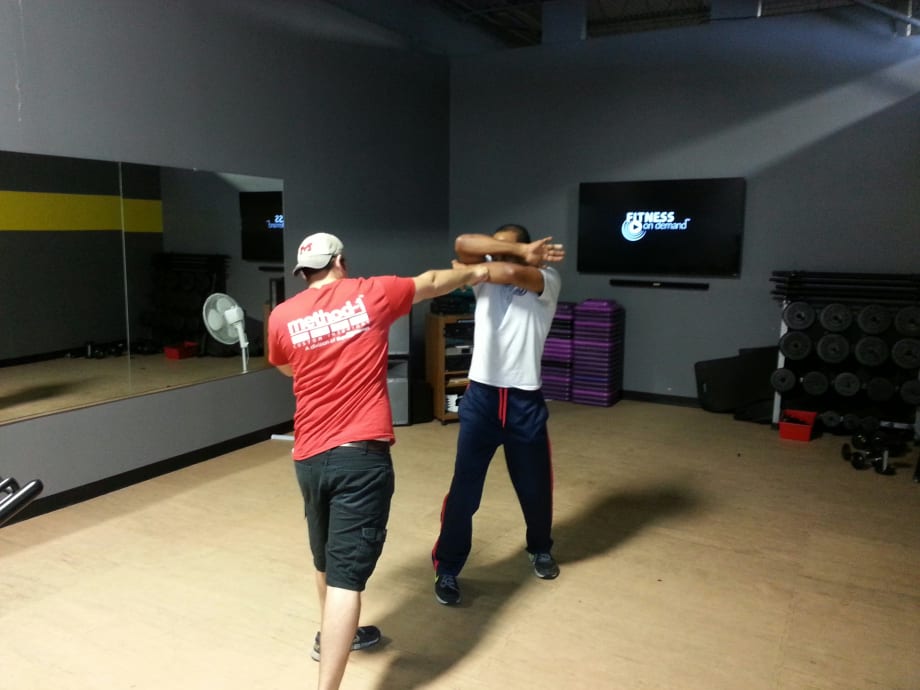From this posture, after an appropriate "cover-up" has been executed, push forward using the momentum from your back foot and begin attacking using your elbows, fists, and hand strikes to regain the upper hand. To execute a knife-hand strike to the neck, flatten out your hand and hit the suspect's neck with the side of your hand. To execute a back-fist, hit the suspect's hands with the back of your fist and knuckles. For a hammer-fist, swing your clenched fist downward to hit the suspect's nose or other body part with the padded part of your fist. Eye gouging may also be appropriate if it is the surest way to stop the suspect's attack on you.
When you are on the offense of a skirmish, rhythm becomes most important. There are no one-punch solutions either, just cover-up solutions. Focus on developing rhythmic combinations. For example, cover, back-fist, elbow, eyes, subdue. Or cover, cover, knife-hand, back-fist, hammer-fist, restrain. Next, try cover, move, hammer-fist, trip-up, restrain. During your training, while practicing transitioning from cover-up into strikes, be creative. Mix your attacks up and use different angles. Become strong and proficient performing the techniques with both hands.
Use your body's natural power generators when executing hand techniques from a stationary or moving position. There are three anatomical power generators that will allow you to maximize your striking power: hips, shoulders, and feet. None of the above hand strikes should lock upon impact because that would have a pushing effect and rob you of critical contact power. A good strike should always snap or crack fast and hard when it makes contact with its intended target, and don't forget to put your hips into it.
Kick Jamming, Body Cover, and Front Foot Kicks
From the "non-offensive stance" and "cover-up," the next step will be to protect your body and stop your opponent's kicks while delivering hard offensive kicks of your own. Let's first begin with stopping kicks, or jamming. This process starts from your "non-offensive stance" using your front leg extended and the full flat or side of the front foot. It's essentially a fast, low side kick delivered to your opponent's incoming leg, foot, shin, thigh, or ankle, preventing him or her from launching a kicking attack or stepping in attempting to rush you.
Balance is always important; it becomes even more necessary when you are standing on one leg using jamming techniques and throwing kicks. As was mentioned earlier regarding weight distribution with the "fighting stance," keep 60% of your weight on your back leg in order to lift your front leg quickly for kicking and moving laterally.











